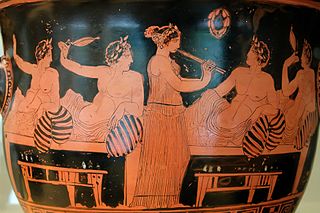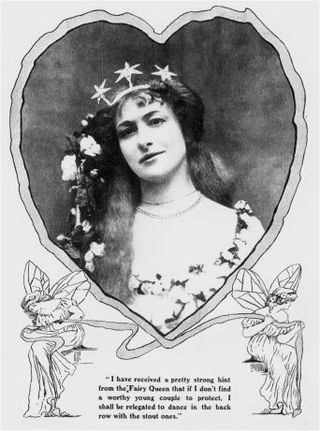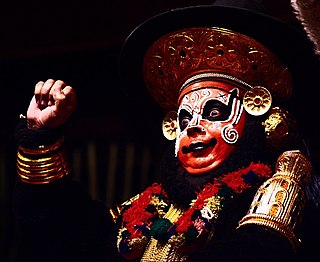
Entertainment is a form of activity that holds the attention and interest of an audience or gives pleasure and delight. It can be an idea or a task, but it is more likely to be one of the activities or events that have developed over thousands of years specifically for the purpose of keeping an audience's attention.

In the history of the United Kingdom and the British Empire, the Victorian era was the reign of Queen Victoria, from 20 June 1837 until her death on 22 January 1901. Slightly different definitions are sometimes used. The era followed the Georgian era and preceded the Edwardian era, and its later half overlaps with the first part of the Belle Époque era of continental Europe.

A circus is a company of performers who put on diverse entertainment shows that may include clowns, acrobats, trained animals, trapeze acts, musicians, dancers, hoopers, tightrope walkers, jugglers, magicians, ventriloquists, and unicyclists as well as other object manipulation and stunt-oriented artists. The term circus also describes the field of performance, training and community which has followed various formats through its 250-year modern history. Although not the inventor of the medium, Newcastle-under-Lyme born Philip Astley is credited as the father of the modern circus.

Harlequinade is an English comic theatrical genre, defined by the Oxford English Dictionary as "that part of a pantomime in which the harlequin and clown play the principal parts". It developed in England between the 17th and mid-19th centuries. It was originally a slapstick adaptation or variant of the commedia dell'arte, which originated in Italy and reached its apogee there in the 16th and 17th centuries. The story of the Harlequinade revolves around a comic incident in the lives of its five main characters: Harlequin, who loves Columbine; Columbine's greedy and foolish father Pantaloon, who tries to separate the lovers in league with the mischievous Clown; and the servant, Pierrot, usually involving chaotic chase scenes with a bumbling policeman.

Music hall is a type of British theatrical entertainment that was most popular from the early Victorian era, beginning around 1850, through the Great War. It faded away after 1918 as the halls rebranded their entertainment as variety. Perceptions of a distinction in Britain between bold and scandalous music hall entertainment and subsequent, more respectable variety entertainment differ. Music hall involved a mixture of popular songs, comedy, speciality acts, and variety entertainment. The term is derived from a type of theatre or venue in which such entertainment took place. In North America vaudeville was in some ways analogous to British music hall, featuring rousing songs and comic acts.

Anthony Ashley Cooper, 3rd Earl of Shaftesbury was an English peer, Whig politician, philosopher and writer.

Victorian morality is a distillation of the moral views of the middle class in 19th-century Britain, the Victorian era.

Penny dreadfuls were cheap popular serial literature produced during the 19th century in the United Kingdom. The pejorative term is roughly interchangeable with penny horrible, penny awful, and penny blood. The term typically referred to a story published in weekly parts of 8 to 16 pages, each costing one penny. The subject matter of these stories was typically sensational, focusing on the exploits of detectives, criminals, or supernatural entities. First published in the 1830s, penny dreadfuls featured characters such as Sweeney Todd, Dick Turpin, Varney the Vampire, and Spring-heeled Jack.

Pantomime is a type of musical comedy stage production designed for family entertainment. It was developed in England and is performed throughout the United Kingdom, Ireland and in other English-speaking countries, especially during the Christmas and New Year season. Modern pantomime includes songs, gags, slapstick comedy and dancing. It generally combines gender-crossing actors and topical humour with a story more or less based on a well-known fairy tale, fable or folk tale. Pantomime is a participatory form of theatre, in which the audience is encouraged and expected to sing along with certain parts of the music and shout out phrases to the performers.

The Lyceum Theatre is a West End theatre located in the City of Westminster, on Wellington Street, just off the Strand in central London. It has a seating capacity of 2,100. The origins of the theatre date to 1765. Managed by Samuel Arnold, from 1794 to 1809 the building hosted a variety of entertainments including a circus produced by Philip Astley, a chapel, and the first London exhibition of waxworks by Madame Tussauds. From 1816 to 1830, it served as The English Opera House. After a fire, the house was rebuilt and reopened on 14 July 1834 to a design by Samuel Beazley. The building is unique in that it has a balcony overhanging the dress circle. It was built by the partnership of Peto & Grissell. The theatre then played opera, adaptations of Charles Dickens novels and James Planché's "fairy extravaganzas", among other works.

Nineteenth-century theatre describes a wide range of movements in the theatrical culture of Europe and the United States in the 19th century. In the West, they include Romanticism, melodrama, the well-made plays of Scribe and Sardou, the farces of Feydeau, the problem plays of Naturalism and Realism, Wagner's operatic Gesamtkunstwerk, Gilbert and Sullivan's plays and operas, Wilde's drawing-room comedies, Symbolism, and proto-Expressionism in the late works of August Strindberg and Henrik Ibsen.

Ages Ago, sometimes stylised as Ages Ago! or Ages Ago!!, is a musical entertainment with a libretto by W. S. Gilbert and music by Frederic Clay that premiered on 22 November 1869 at the Royal Gallery of Illustration. It marked the beginning of a seven-year collaboration between Gilbert and Clay. The piece was a critical and popular success and was revived many times, including at St. George's Hall, London in 1870 and 1874, and in New York in 1880.
This is a selected list of W. S. Gilbert's works, including all that have their own Wikipedia articles. For a complete list of Gilbert's dramatic works, see List of W. S. Gilbert dramatic works.

The Red Barn Murder was a 1827 murder in Polstead, Suffolk, England. A young woman, Maria Marten, was shot dead by her lover William Corder at the Red Barn, a local landmark. The two had arranged to meet before eloping to Ipswich. Corder sent letters to Marten's family claiming that she was well, but after her stepmother spoke of having dreamed that Maria had been murdered, her body was discovered in the barn the next year.

The Olympic Theatre, sometimes known as the Royal Olympic Theatre, was a 19th-century London theatre, opened in 1806 and located at the junction of Drury Lane, Wych Street and Newcastle Street. The theatre specialised in comedies throughout much of its existence. Along with three other Victorian theatres, the Olympic was eventually demolished in 1904 to make way for the development of the Aldwych. Newcastle and Wych streets also vanished.

Harlequin and the Fairy's Dilemma, retitled The Fairy's Dilemma shortly after the play opened, is a play in two acts by W. S. Gilbert that parodies the harlequinade that concluded 19th-century pantomimes.

The history of theatre charts the development of theatre over the past 2,500 years. While performative elements are present in every society, it is customary to acknowledge a distinction between theatre as an art form and entertainment, and theatrical or performative elements in other activities. The history of theatre is primarily concerned with the origin and subsequent development of the theatre as an autonomous activity. Since classical Athens in the 5th century BC, vibrant traditions of theatre have flourished in cultures across the world.

Thomas Ernest Boulton and Frederick William Park were Victorian cross-dressers. Both were homosexual men from upper-middle-class families, both enjoyed wearing women's clothes and both enjoyed taking part in theatrical performances—playing the women's roles when they did so. It is possible that they asked for money for sex, although there is some dispute over this. In the late 1860s they were joined on a theatrical tour by Lord Arthur Clinton, the Liberal Party Member of Parliament for Newark. Also homosexual, he and Boulton entered into a relationship; Boulton called himself Clinton's wife, and had cards printed showing his name as Lady Arthur Clinton.

Dan Leno was an English comedian and stage actor of the Victorian and Edwardian eras, famous for performing in music hall. As a child, he was known for his clog dancing, and in his teen years, he became the star of his family's music hall act throughout Britain. He was an increasingly popular solo artist during the late 1880s and 1890s. He also performed in pantomimes and a few Victorian burlesques and comic plays and musicals, especially in the last two decades of his career.

Thomas Barry was an Irish circus clown. He worked with various circuses but was associated most with Astley's Circus. Barry was a traditional "buffoon" whiteface clown whose performances were based on physical humour. In 1844 he featured in a famous stunt whereby he appeared to be towed along the River Thames in a tub pulled by four geese. Barry left Astley's Circus in 1848 after falling-out with another clown, though he later returned, he retired permanently in 1856 after another disagreement. Whilst out of the circus Barry was landlord of the Crown Tavern in Lambeth.



















